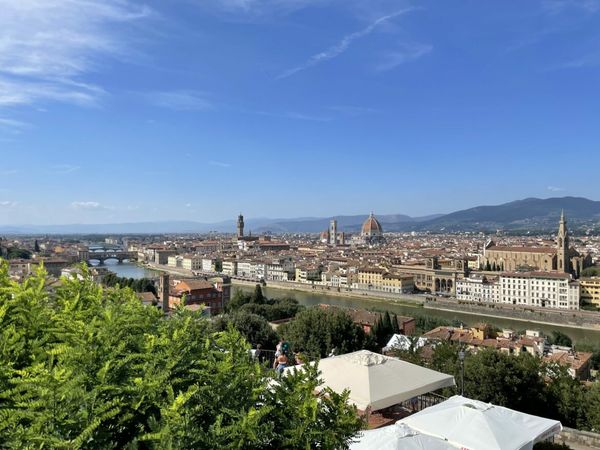
20.11.2021
Tuscan landscapes...
Tuscany ... A myriad of images, sensations and places, but also a unique way of life in the world.
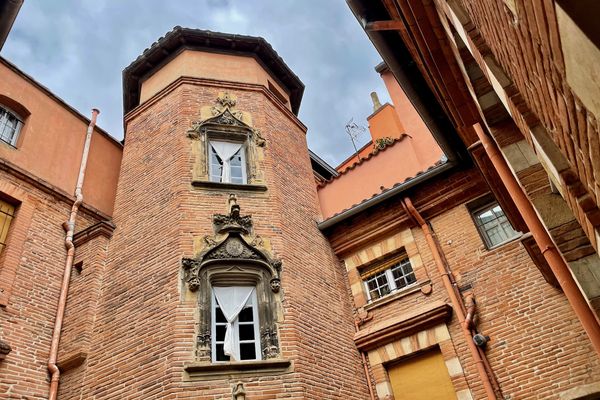
17.06.2022
It is with great pride that we announce the opening of our fifth agency in Toulouse!
After Paris (right bank & left bank), Montpellier and Uzès, it is at 19 Rue Croix Baragnon that Styles has found its home!
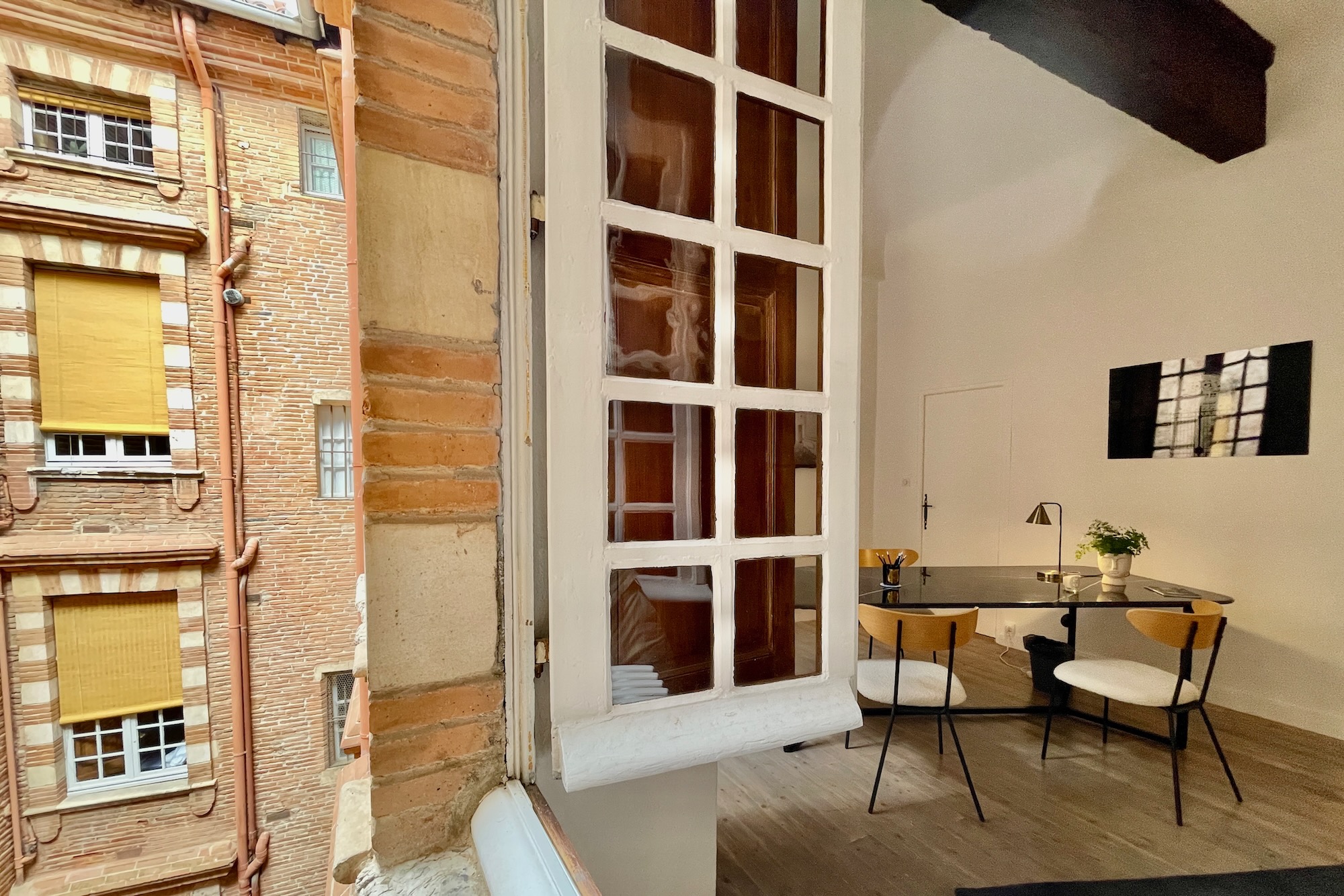
Toulouse and its region are full of architectural surprises. The prestige real estate market is in full swing, and in light of this development, opening a fifth agency seemed obvious for us.
As you know, at Styles, we love beautiful places, the soul and the cachet that emerge from them.
We were lucky enough to be able to set up our office at a prestigious address, steeped in history, right in the heart of the Pink City.
We invite you below to discover more about the Hôtel de Bonnefoy, at 19 Rue Croix Baragnon, but also to consult our collection of properties.
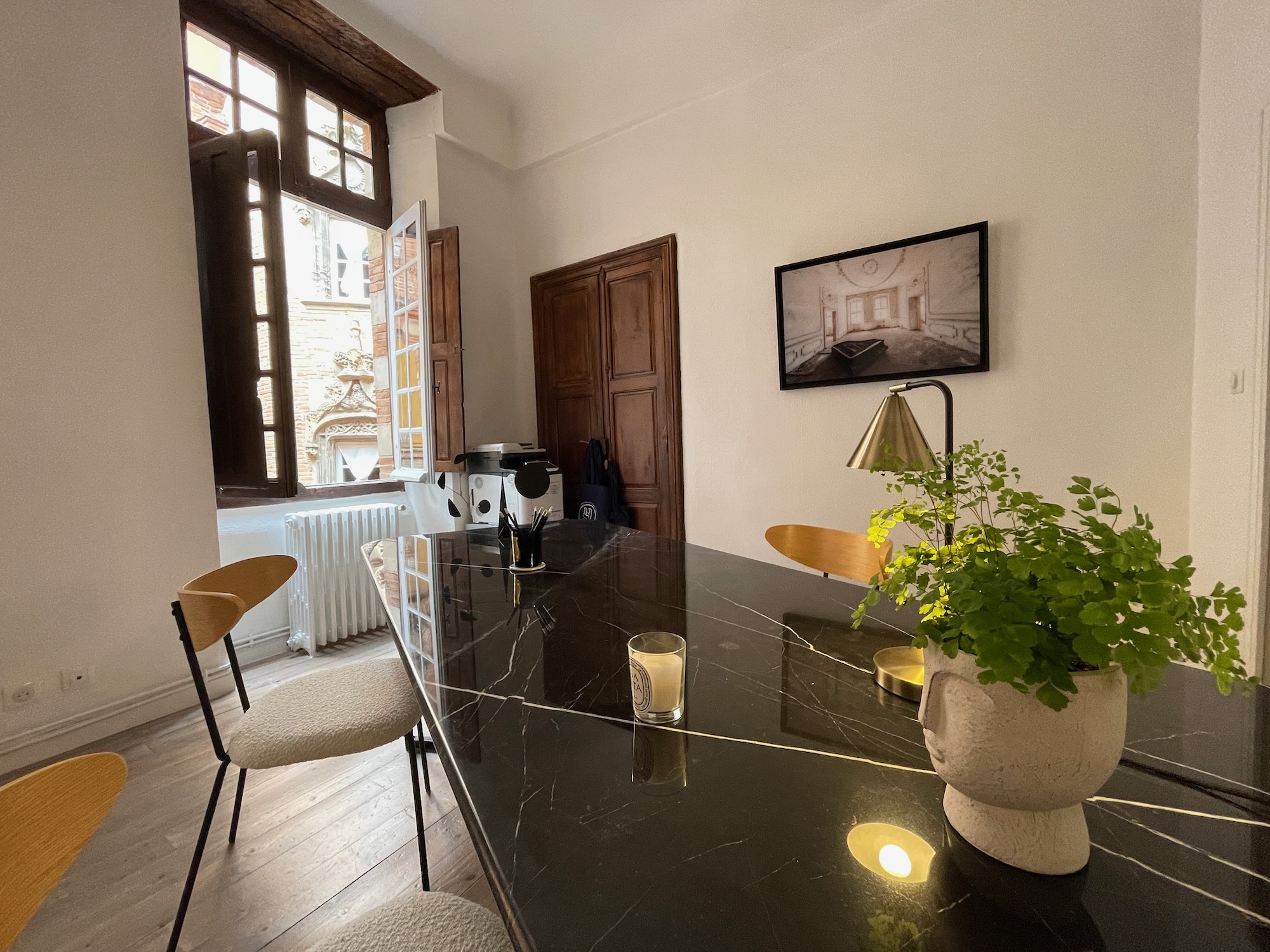
The Hôtel de Bonnefoy is a private mansion built in the style of the first Toulouse Renaissance, in the first quarter of the 16th century, around 1513. However, it retains older elements, with traces of 14th century Gothic windows, comparable to those in the neighboring Romanesque-Gothic house.
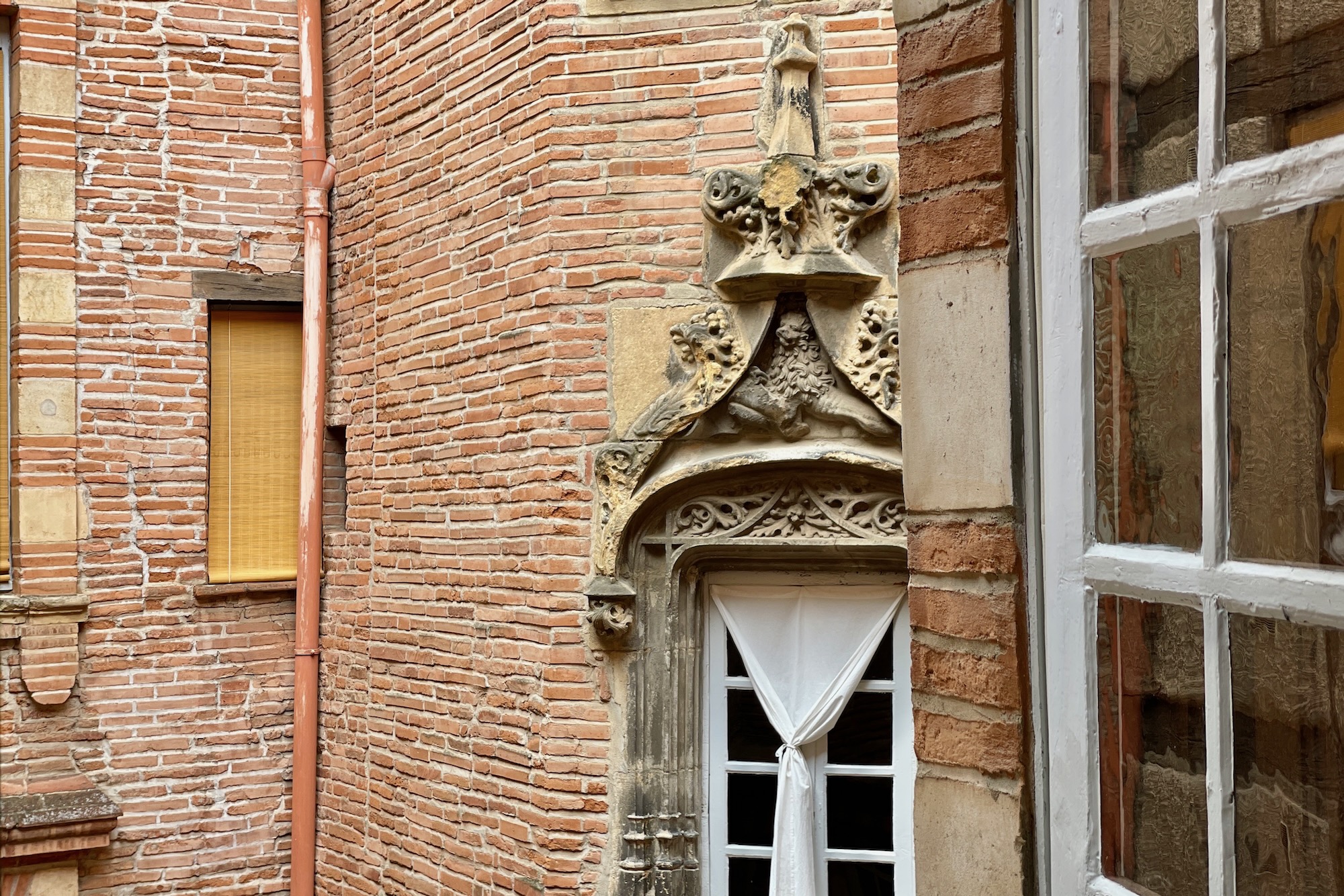
Did you know that?
In the Middle Ages, the space of the present Hôtel de Bonnefoy was occupied by a house with its main façade and entrance on Rue Tolosane. In 1477, it belonged to the moneychanger Bertrand de La Jugie. The latter, owner of several houses in Toulouse, came from a rich local family, and one of his ancestors, Pierre de La Jugie, had been capitoul (member of the municipal council that ran the city) in 1314.
The building entered the property of Bérenguier Bonnefoy (or Bonnafède), capitoul in 1513-1514, as part of the dowry of Pierre de La Jugie's daughter, Cécile. In 1513, he had his own private mansion and tower built on the basis of the old building, a privilege of the capitouls in Toulouse. Thereafter, the hotel passed in 1548 to Jean de Bonnefoy, adviser to the Presidential Court, notary and secretary to the king. He was the son of Jean de Bonnefoy, Lord of Montauriol, and Anne de Bernuy. In 1575, the hotel passed to the brother of Jean de Bonnefoy, Jacques de Bonnefoy, co-lord of Montesquieu and capitoul in 1547-1548. In 1586, Jean de Bonnefoy, from the second marriage of Jean de Bonnefoy to Marie de Sabatery, squire and lord of Villiers, inherited the property.
In 1614, the widow of Jean de Bonnefoy, Martres de Potier-Laterasse, and her son, Jean, sold the hotel to Simon de Labat, capitoul in 1611-1612. In 1622, after the death of his wife, Marie de Lesthing, he retired and joined the Dominicans. In 1634 his son Jean-Louis de Labat, lawyer and capitoul in 1651-1652, then in 1652-1653, inherited the property. In 1652, he sold to Jean de La Clavière the building on the Tolosane street frontage, which was then permanently separated from it. Two years later, he sold the building on rue Croix-Baragnon to the merchant Pierre Martin Coulet.
In 1678, the hotel became the property of Henri Lacaze, lord of Montbel and co-lord of Colomiers, capitoul in 1679-1680. The property remained in the Lacaze family, since it was passed on in 1729 to Jean-Jacques Lacaze de Rochebrun, lord of Sapens, lawyer at the Parliament and capitoul in 1729-1730. He had his coat of arms added to the tympanum of the first window of the tower, and placed his motto, "Uni suspiro" (I have only one desire), on the door of the corridor.
In 1957, the hotel was bought by Roger Amalric, a lawyer in Montauban and president of the Bar, who undertook the restoration of the building in the following years. This restoration was rewarded in 1975 by the medal of the Toulouse inhabitants. The hotel remained in the same family.
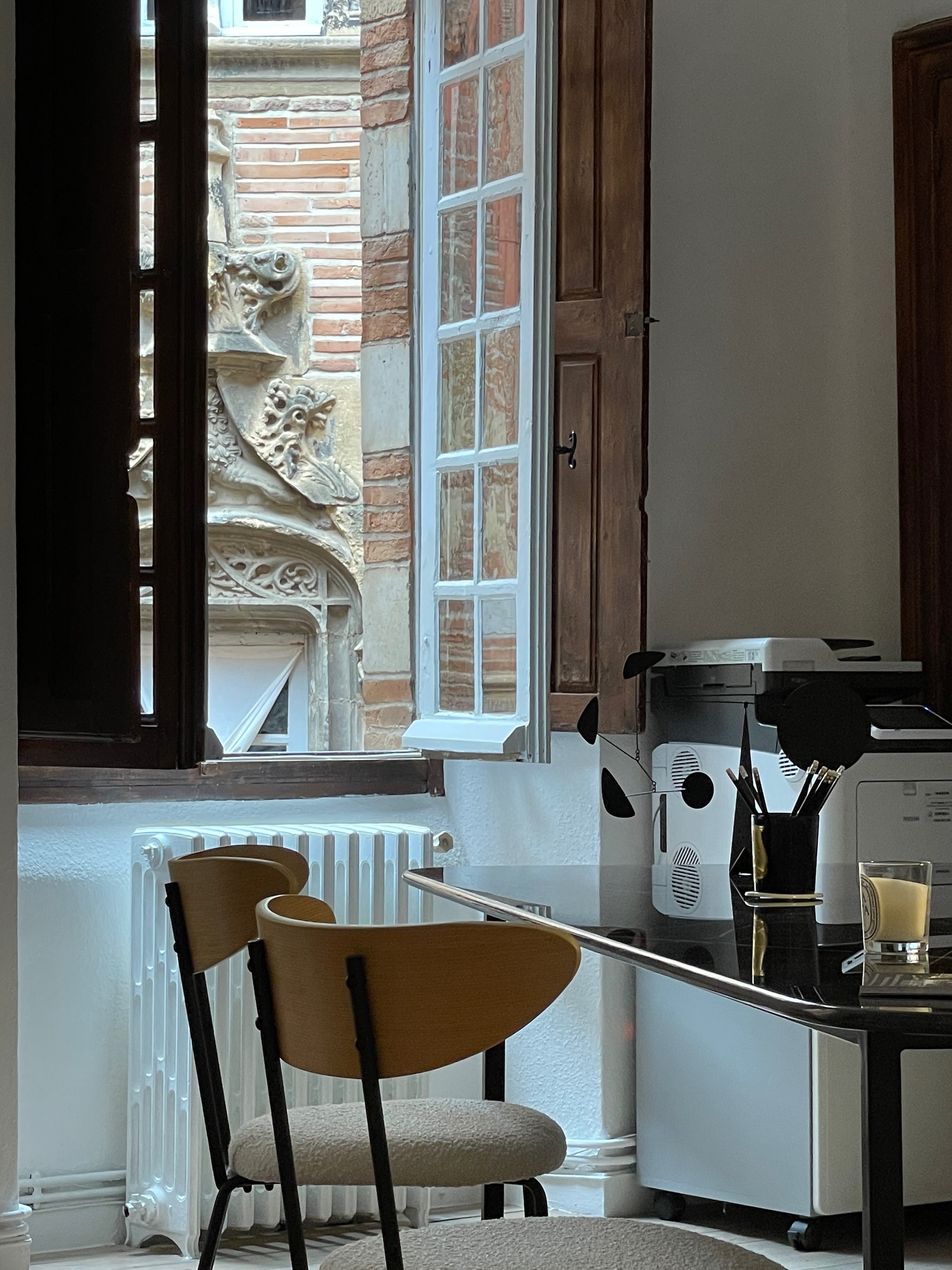
The street frontage
The hotel consists of a building with several parts, organized around a central courtyard. The elevation on rue Croix-Baragnon, divided into five irregular bays, bears witness to several construction periods: although the oldest remains date from the 14th century, the façade was extensively remodeled in the early 16th century, before the bays were partly restored in the first half of the 18th century. The elevation is topped by a molded cornice.
On the first floor, the semicircular carriage entrance is located on the right side of the façade. The key of the arch, in ashlar, bears a Latin inscription: Fixa polo requies 1729. A cornice surmounts the whole. To its left, the pedestrian door, built at the same time, is inscribed in an old arcade from the 16th century. In the center, a segmental store arcade is framed by two rectangular doors. To the left of the façade, a window has been blocked up, while another is closed by a wrought iron cross.
On the first floor, the five windows are segmental and crowned with a cornice. They testify to a campaign of work in the second half of the 17th century. Older relieving arches, probably from the 16th century, are visible above the window of the first bay on the left and the fourth bay on the right. A molded cornice separates the first and second floors. The windows on this level are similar to those on the first floor. However, traces of medieval bays, from the time when this floor was the first level, are still visible under the relieving arches. These geminated bays with horseshoe arches are very similar in shape to those of the Romanesque-Gothic house. On the left, the geminated bays have also been blocked up and replaced by a small Gothic-style window topped by an accolade. The top floor, of lesser height, is pierced by simple rectangular windows.
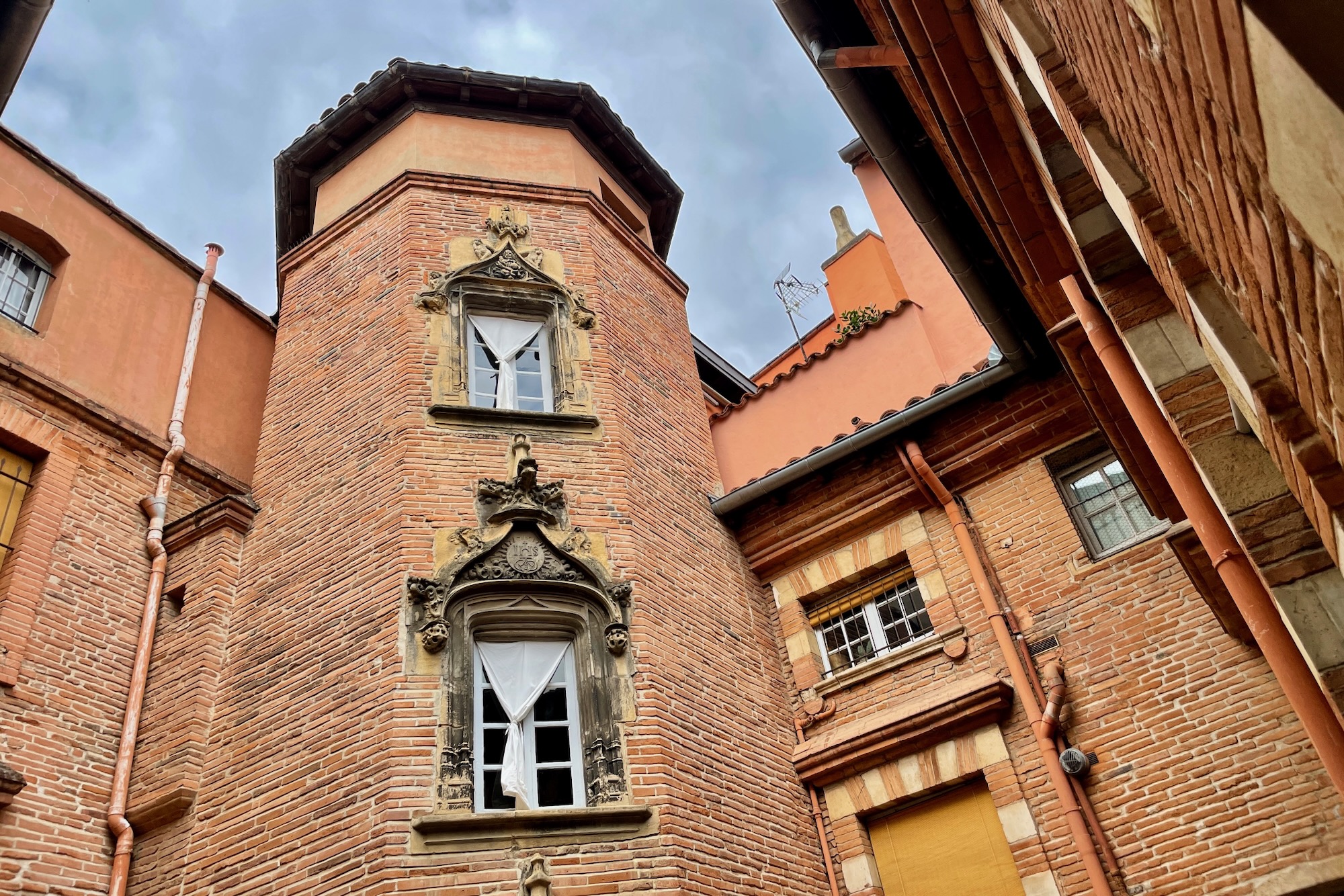
The inner courtyard
The courtyard is accessed through a pedestrian door that leads to a corridor. The key to the courtyard door was engraved in 1730 with the Latin inscription: Uni suspiro 1730 ("I have only one desire").
In the courtyard, the stair tower was built around 1513 for the capitoul Bérenguier Bonnefoy. Its decoration corresponds to the period of transition between the Gothic and the Renaissance: busts, putti, accolades, crossettes, bouquets and foliage form a complex decoration. It contains a spiral staircase of 67 steps, topped by a terminal vault made by its last owner, which supports a polygonal roof.
The windows, with molded stone frames, are pierced in the central face of the tower. They are surmounted by richly ornamented braced arches, which enclose a sculpted tympanum. The fourth and highest of the tympanums bears a bust of a man, perhaps the Eternal Father holding a globe in one hand and blessing with the other. The modillions are adorned with Gothic-style animals, while the curly cabbage hooks of the brace have been replaced by naked children, in the Renaissance taste. The third tympanum is carved with the monogram IHS, in Roman characters, in a radiating host, and the angelic salutation Ave Maria, in Gothic characters. The second tympanum shows a lion supporting a coat of arms that may represent the sheep of the Bonnefoy coat of arms: "azure with a sheep passant argent on a terrace vert, on a chief couched or three crosses gules". The tympanum of the first window was hammered out, probably during the Revolution. It may have borne the coat of arms of Jean-Jacques Lacaze de Rochebrun, capitoul in 1729. On this window, the modillions represent busts of women, similar to those of the early French Renaissance.
The facades of the courtyard are relatively sober, although the south, east and west facades are punctuated by high windows.
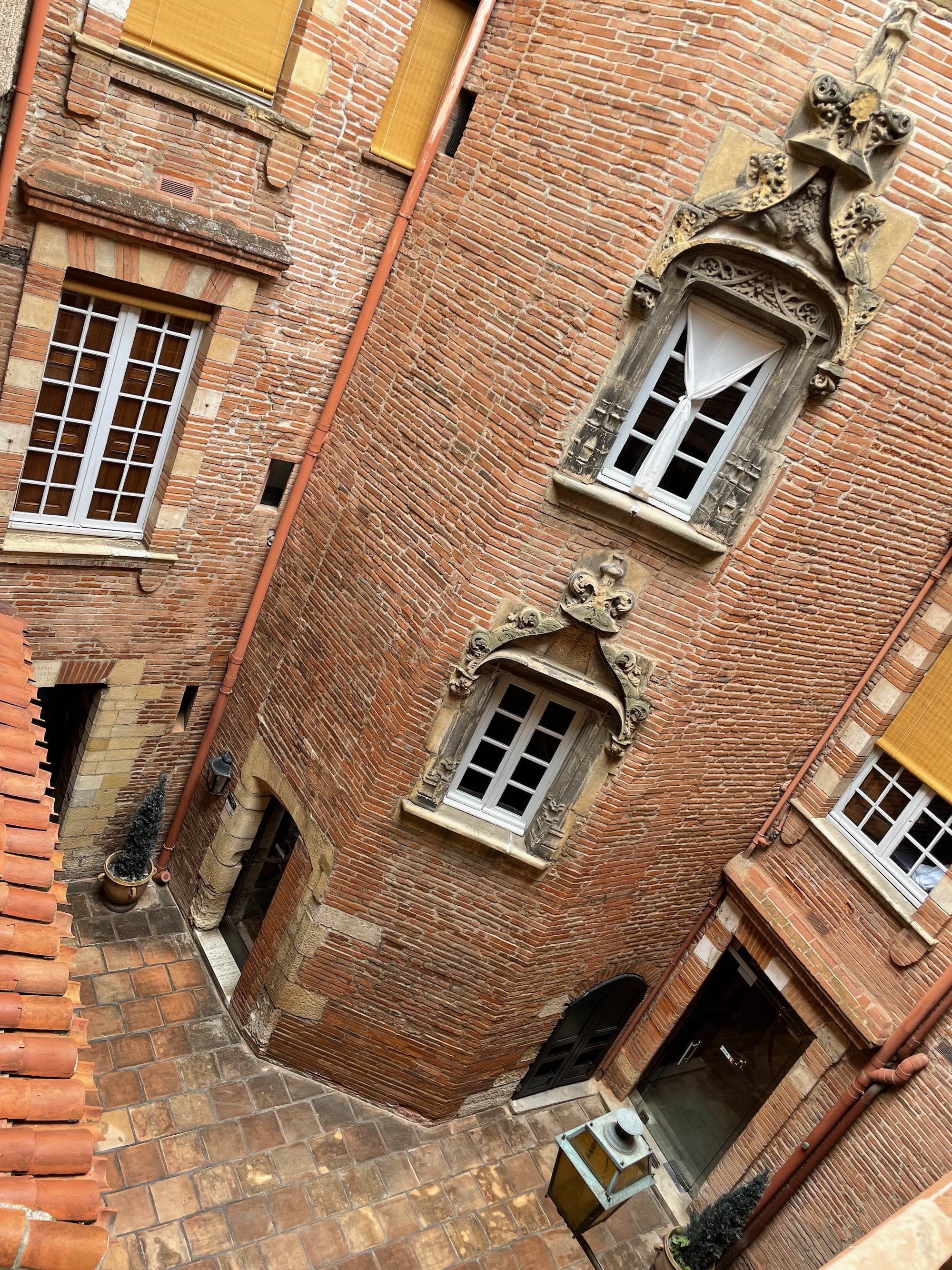
Indoors
The building on rue Croix-Baragnon rises above a medieval cellar dating from the 13th century, vaulted with ogives. On the first floor, a room retains two ribbed windows separated by a double arch. The ribs are received by stone bases sculpted with monsters and grotesque faces, perhaps from the 16th century.
The coat of arms of Bérenguier Bonnefoy can be found on a keystone at the end of the room. On the first floor, a beam stands out with motifs dating from the Romanesque period.
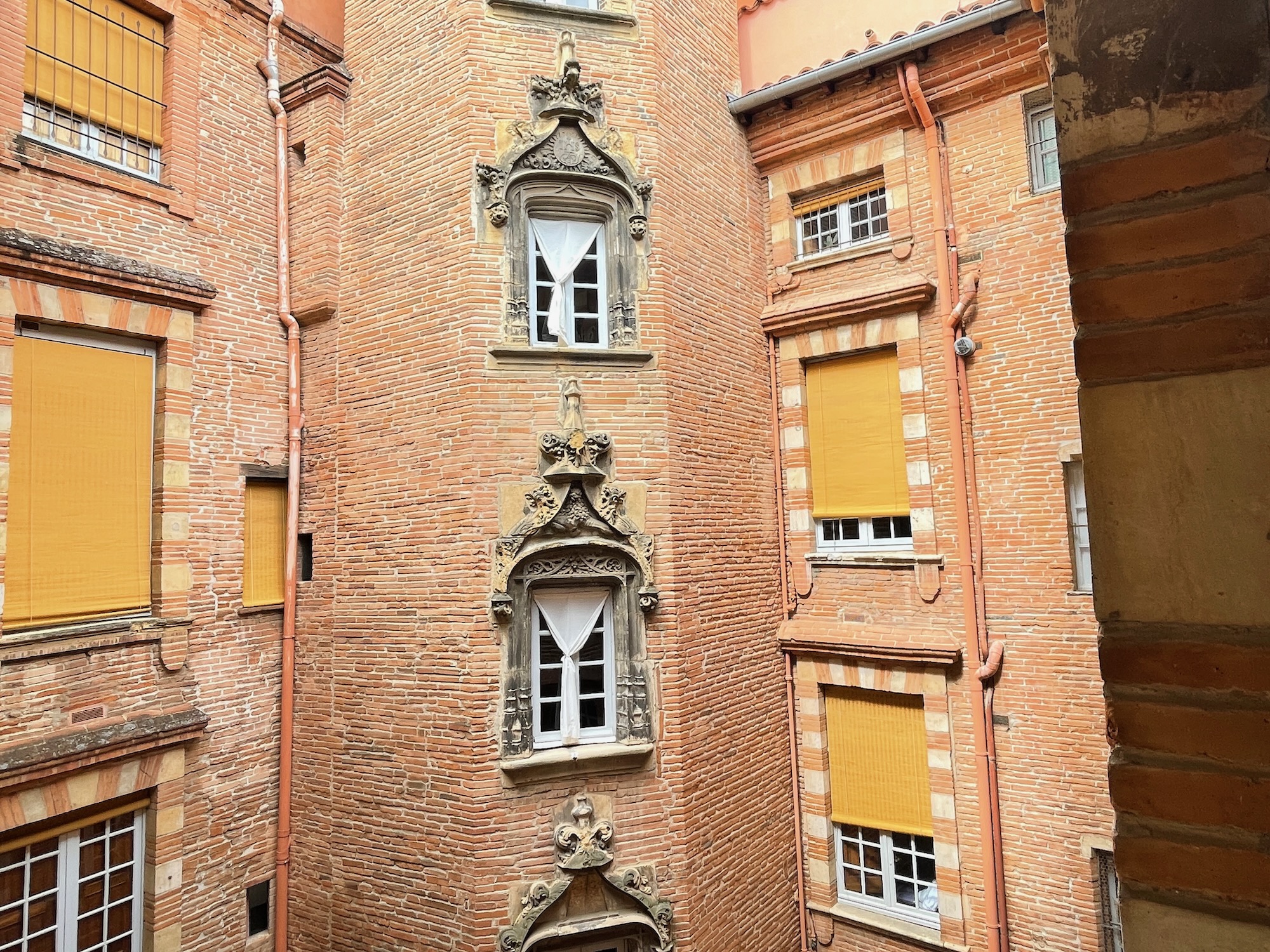
A true marvel, that we take pleasure in presenting to you!
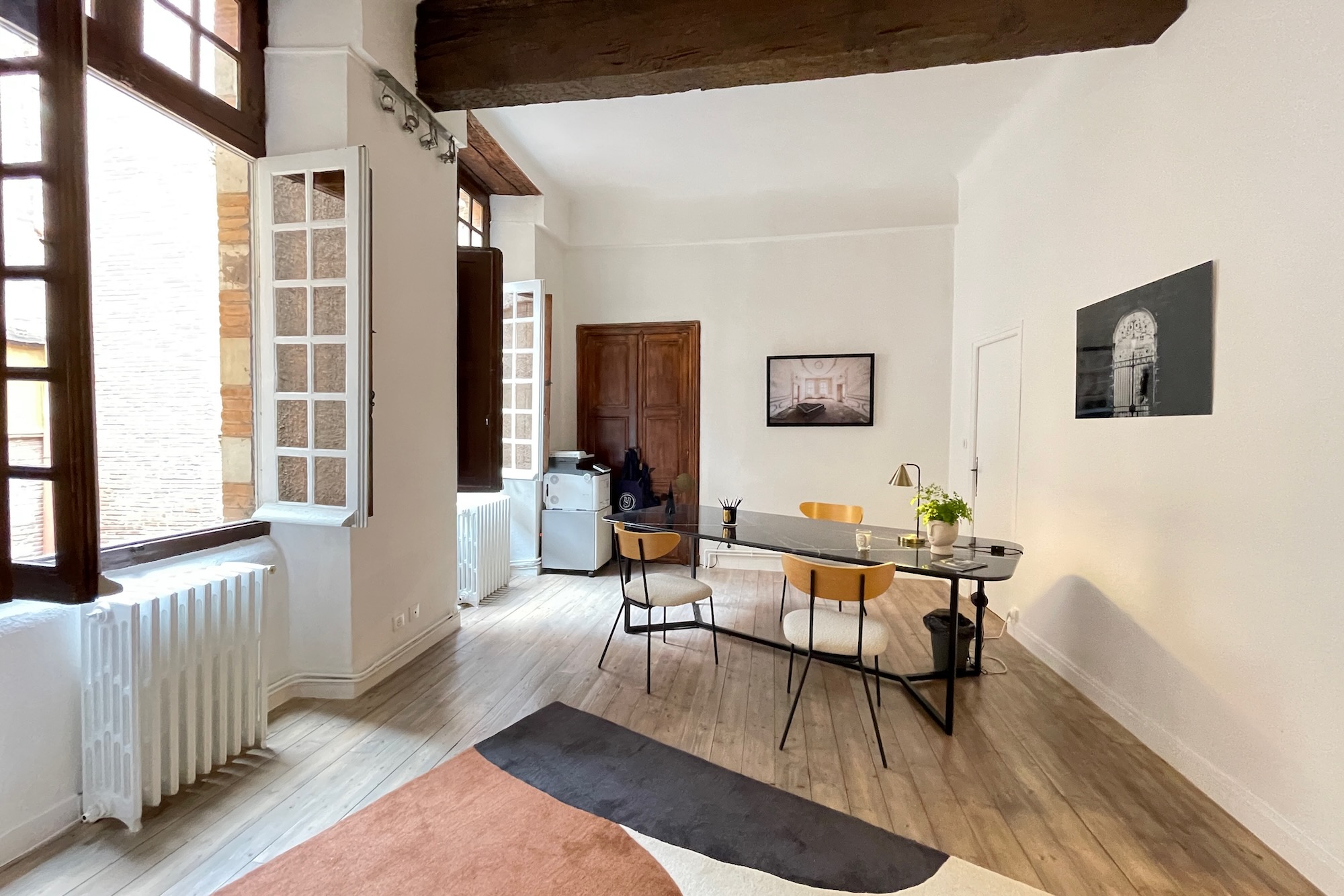
We are waiting for you, ready to accompany you in your real estate research!
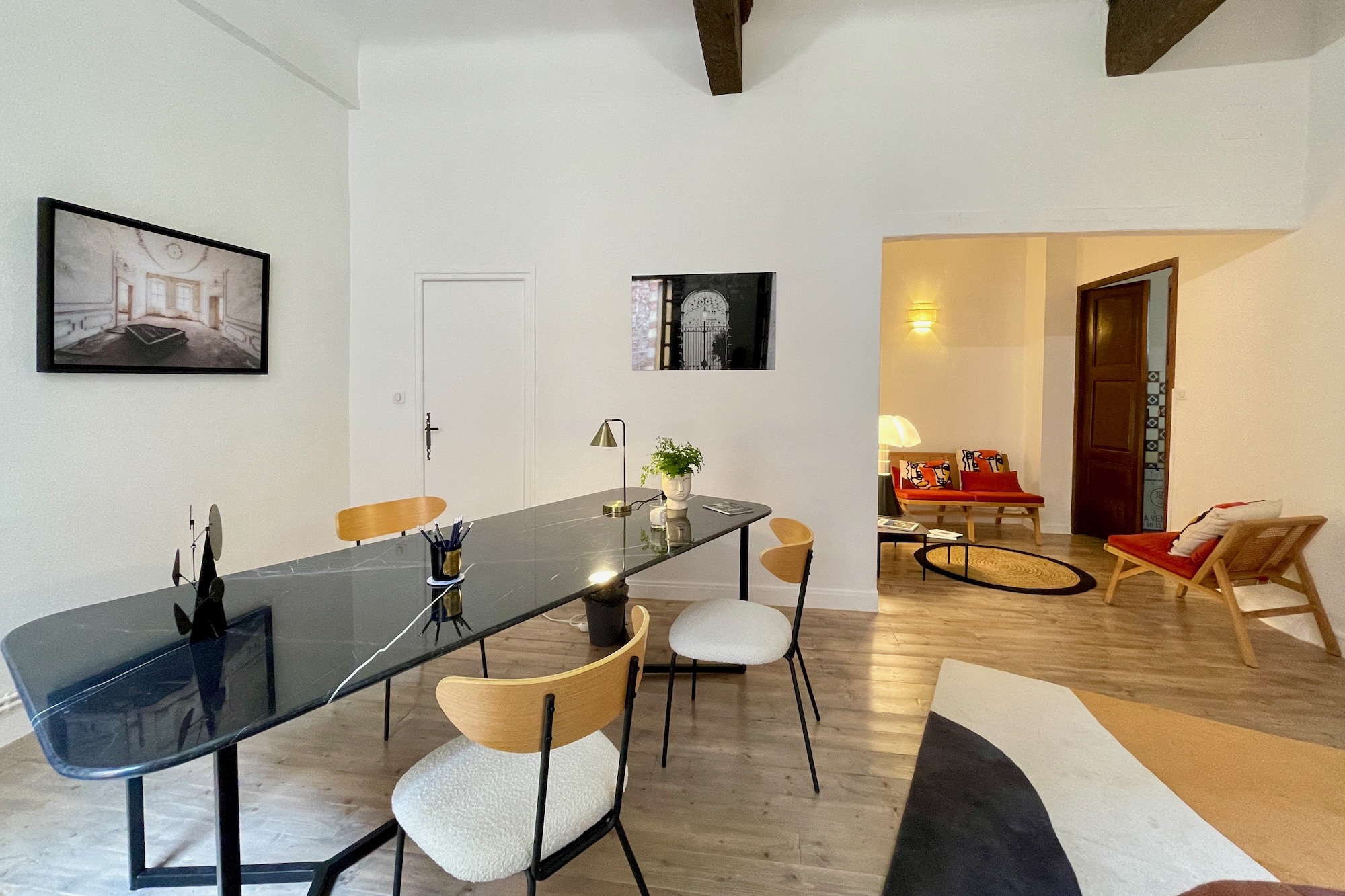
Our office in Toulouse is open by appointment.
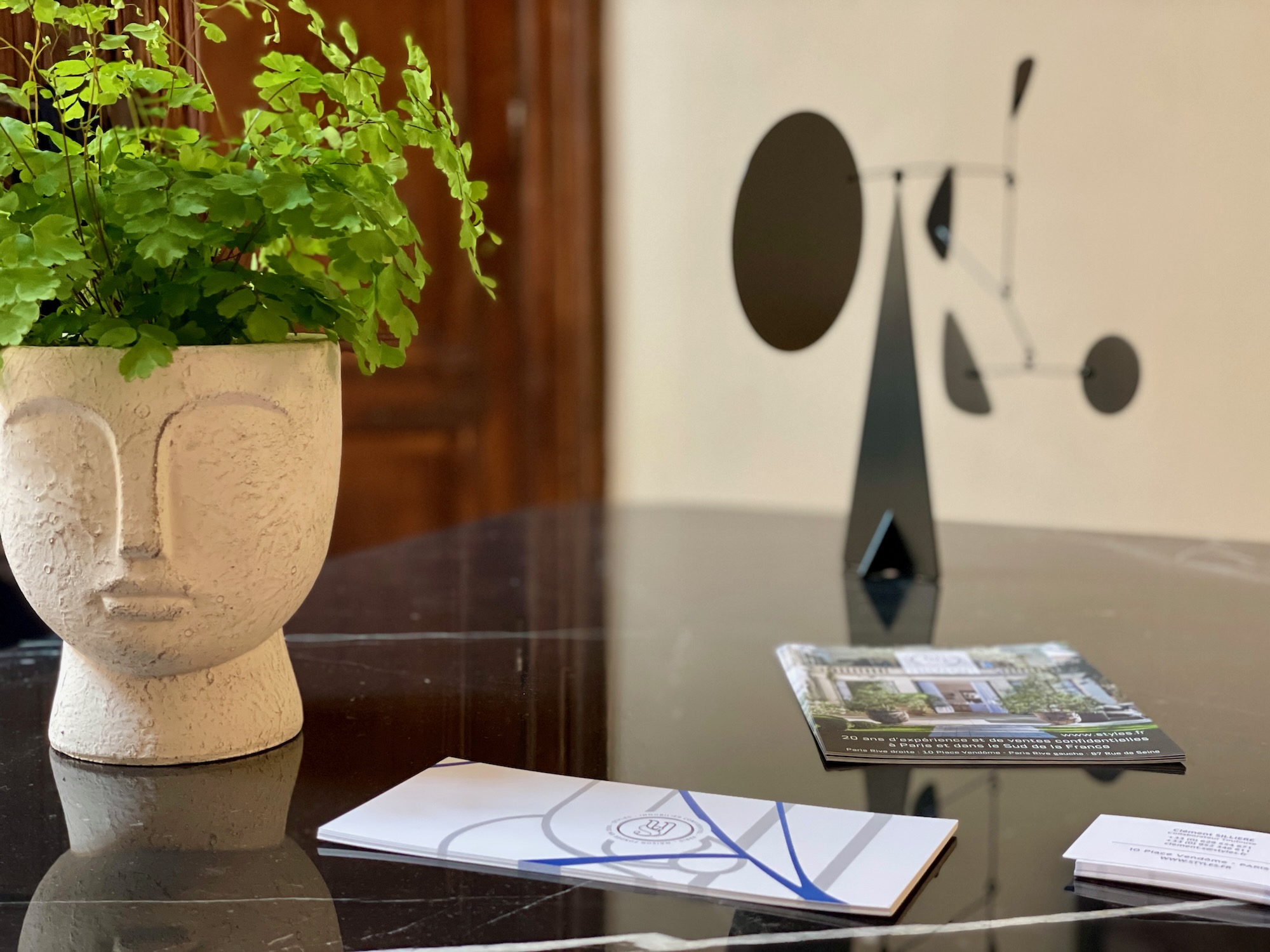
Styles's journal